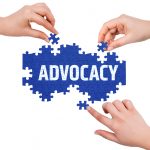Can a 504 Plan be ENOUGH Support?
 Many more students with hearing loss are being denied eligibility for specialized instruction and provided 504 Plans to meet their accommodation needs. The US Department of Education provides extensive answers to 47 FAQs on Section 504. Because hearing loss substantially limits one or more major life activities (hearing) virtually all students with hearing loss are qualified to receive a 504 Plan. Eligibility is considered per the student’s function without use of hearing devices.
Many more students with hearing loss are being denied eligibility for specialized instruction and provided 504 Plans to meet their accommodation needs. The US Department of Education provides extensive answers to 47 FAQs on Section 504. Because hearing loss substantially limits one or more major life activities (hearing) virtually all students with hearing loss are qualified to receive a 504 Plan. Eligibility is considered per the student’s function without use of hearing devices.
If there is a question as to whether the hearing loss poses a “substantial limitation” tests tailored to evaluate the specific areas of educational need must be used. View the Estimating Access White Paper for information on this tailored assessment. Once a student is identified as eligible he or she will always be entitled to receive 504 Plan supports and services as long as the limitation of major life activities continues. Periodic reevaluation is required to verify that the impairment continues to limit the student’s ability to learn or other major life activity (i.e., hear).
“What does this student need to have equal access and to communicate in school as effectively as others?” is the guiding question for school teams to consider in developing a 504 Plan for a student with hearing loss. Section 504 requires recipients to provide to students with disabilities appropriate educational services designed to meet the individual needs of such students to the same extent as the needs of students without disabilities are met. Since 504 Plans are used in public schools to provide the accommodations and supports required by the Americans with Disabilities Act for students with hearing loss, the language specific to auxiliary aids and services within the ADA can help to further understand the extent of these supports.
Appropriate educational services can include:
- Adjustments or accommodations in the regular classroom so that students can receive and convey information as effectively as peers.
- Related/auxiliary aids consist of devices, technologies, and methods for providing effective communication, as well as the acquisition or modification of equipment or devices (i.e., computer connection for hearing devices). Auxiliary aids can also include, but are not limited to, interpreters, note takers, and closed or open captioning.
- Related services refer to developmental, corrective, and other supportive services needed to ‘level the playing field’ for access and effective communication. In terms of students with hearing loss this can mean monitoring of auditory access/devices by the educational audiologist, inservice of classroom teachers and periodic progress monitoring (observation) and/or ongoing parent/teacher consultation by the teacher of the deaf/hard of hearing, teaching a student to effectively use hearing devices (i.e., operation, monitoring, troubleshooting of devices), etcetera.
Once the need for an auxiliary aid or service has been identified, the public school district must provide it as soon as possible. If the school suspects the auxiliary aid or service to be an undue financial burden, the complete resources available to the school district, not just the school, need to be considered for funding. An appropriate education for a student with a disability under the Section 504 regulations could consist of education in regular classrooms, education in regular classes with supplementary services, and/or special education and related services.
